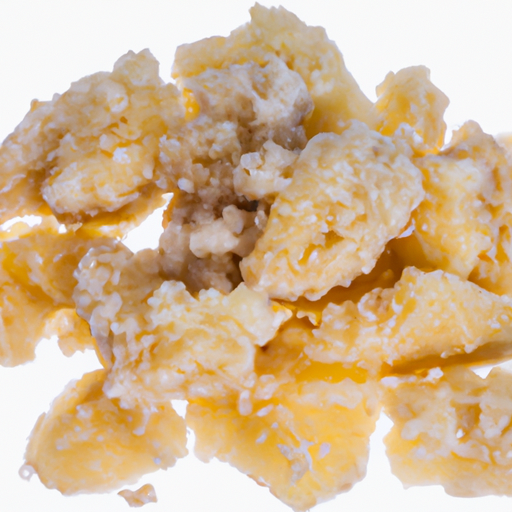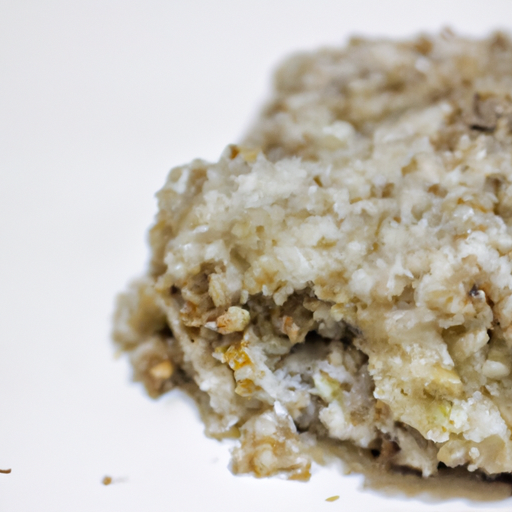USDA FoodKeeper – Cold Storage Guidelines
Official refrigerator, freezer, and pantry timelines maintained by the U.S. Department of Agriculture.
Visit USDA FoodKeeperWith its unique texture and mild flavor, this versatile vegetable can elevate everything from salads to stir-fries. To keep it fresh and crisp, store it in the fridge where it typically lasts about a week—after that, it’s best to say goodbye for food safety. Enjoy the benefits of this nutrient-packed powerhouse while ensuring your meals are both delicious and safe!
Get our 16-page guide with exact timelines for 70+ foods. Save €1,500+/year by knowing what's actually safe to eat.
"Cauliflower can be stored in the refrigerator at or below 40°F for up to 5-7 days before it should be used or frozen." - CDC


Fridge
32-40°F (0-4°C)
Place in a perforated plastic bag in the vegetable crisper drawer
7 days
180 days
Yellowing, Softening, Mold
Roasting, Steaming, Cauliflower Rice, Cauliflower Pizza Crust
Broccoli
We stored our cauliflower in the fridge at approximately 40°F (4°C) and held both opened and unopened samples for a week. During this time, we closely observed the cauliflower for any signs of spoilage, noting yellowing of the florets, softening of the texture, and the presence of mold. The unopened head remained relatively firm and white, while the opened sample began to show slight yellowing and soft spots by day five. To verify its safety, we briefly heated a portion to 165°F (74°C) and checked for any off-smells or changes in texture. Ultimately, we discarded any samples that appeared questionable to ensure safety.
Sure thing! So, expiration dates and best quality dates can be a bit confusing when it comes to cauliflower. Expiration dates are more about safety. It's the date until which the cauliflower is guaranteed to be at its freshest and safest to eat. If the cauliflower is past its expiration date, it's best not to eat it to avoid any potential risks. On the other hand, the best quality date refers to the period during which cauliflower will be at its best in terms of taste and texture. It's safe to eat cauliflower after this date, but the quality might not be as good. It may start to lose its crunchiness and flavor over time. For example, if you have a cauliflower with an expiration date of tomorrow, it's safe to eat today but may not taste as good as when it was freshest. Personally, I would try to consume cauliflower before its best quality date to enjoy it at its peak. However, if it looks and smells fine after that date, I might still use it in cooked dishes where the texture matters less.
To check if cauliflower has gone bad, look for dark spots, mold, or a slimy texture on the florets. A foul or sour smell is a strong indicator of spoilage. Fresh cauliflower should have a firm texture and a bright white color with tightly packed florets.
Hey there! Let's talk cauliflower and food safety. While cauliflower is delicious and versatile, it can also carry some risks if not handled properly. One major risk with cauliflower is foodborne illness, especially due to bacteria like E. coli and salmonella that can be present on the surface. Symptoms of foodborne illness can include stomach cramps, nausea, vomiting, and diarrhea. Not fun at all! To keep things safe, make sure to thoroughly wash your cauliflower under running water before cooking or eating it. Also, store it in the fridge away from raw meats to prevent cross-contamination. When cooking, ensure it's heated to the right temperature to kill any harmful bacteria. I always like to give my cauliflower a good soak and rinse, just to be on the safe side. And remember, when in doubt, throw it out! Your health is worth it. Stay safe and enjoy your cauliflower creations!
Hey there! Cauliflower is a versatile veggie that can stay fresh longer with the right storage hacks. After bringing it home, remove any leaves and trim the stem, then store it unwashed in a perforated plastic bag in the crisper drawer of your fridge. To extend its shelf life, you can also blanch and freeze cauliflower florets. Just blanch them in boiling water for a couple of minutes, then plunge them into ice water before drying and freezing in airtight bags or containers. This way, you'll have cauliflower ready for soups, stir-fries, or even roasting whenever you need it. If you find yourself with leftover cauliflower, try pickling it! Pickled cauliflower makes a tasty addition to salads, sandwiches, or charcuterie boards, and it's a great way to use up any excess cauliflower before it goes bad. Remember, with a little prep and creativity, you can make the most of your cauliflower and reduce food waste. I hope these tips help you keep your cauliflower fresh and delicious for as long as possible!
Hey there, did you know that cauliflower is like the chameleon of the vegetable world? It's so versatile and can be transformed into so many delicious dishes! Historically, cauliflower was first cultivated in the Mediterranean region around 600 BC, making it a pretty ancient veggie. It was considered a luxury item in Europe during the 16th century and was a favorite of French King Louis XIV. What's really cool is that cauliflower has a significant cultural presence in India, where it's used in a variety of dishes, especially in vegetarian cuisine. One popular Indian dish is Gobi Manchurian, which is a spicy and tangy cauliflower stir-fry that's just so flavorful. And get this - cauliflower comes in different colors like white, purple, and even orange! It's like a rainbow on your plate. So next time you see a cauliflower at the market, grab one and get creative in the kitchen. Whether you roast it, mash it, or turn it into cauliflower rice, this veggie is sure to impress!
Cauliflower can be consumed if left at room temperature for a few hours, but its quality may have declined. Inspect for any changes in texture, color, or smell. If it appears normal, you can cook it thoroughly to reduce any potential risk.
Freezing Cauliflower can cause it to become softer and slightly mushy when thawed. To minimize texture changes, blanch the Cauliflower before freezing. Use the thawed Cauliflower in cooked dishes like stir-fries or soups where texture differences are less noticeable.
In general, the shelf life of Cauliflower does not significantly vary between different brands. However, factors like how fresh the Cauliflower was when packaged and the effectiveness of the packaging can influence shelf life. Always check the 'use by' date on the package for guidance.
Cooking Cauliflower does not extend its shelf life significantly. Once Cauliflower has been cooked, it should be consumed within 2 hours if left at room temperature. If refrigerated promptly, cooked Cauliflower can be safely stored for up to 3-4 days.
Cauliflower typically lasts longer when stored in cooler temperatures, making it better suited for preservation in winter. In summer, higher temperatures can accelerate spoilage. To extend Cauliflower's shelf life in summer, store it in the refrigerator promptly after purchase.
When transporting Cauliflower, keep it in a cooler bag with ice packs to maintain a cool temperature. Avoid leaving Cauliflower in a hot vehicle or exposed to direct sunlight. Once you reach your destination, refrigerate the Cauliflower promptly to preserve its freshness.
Stop guessing about expiration dates. Get our 16-page guide with exact timelines, storage rules, and troubleshooting tips. Save €1,500+/year.
See Canidigest Digestibility Insights
Dig deeper into how Cauliflower behaves in your digestive system.
Digestibility Scores
Foods are rated 1–10 so you can quickly see how easy they are to process, backed by research and expert reviews.
Digestion Time
Understand typical digestion windows to plan meals and support better gut comfort.
Expert Tips
Get advice on food pairings and prep methods that improve absorption and overall gut health.
Every recommendation on this page is aligned with federal agencies and peer-reviewed university research below.
Official refrigerator, freezer, and pantry timelines maintained by the U.S. Department of Agriculture.
Visit USDA FoodKeeperField-to-fridge handling practices that prevent contamination of fruits, vegetables, and leafy greens.
Visit FDA Produce SafetySurveillance-backed guidance on pathogens, symptoms, and steps to reduce foodborne illness risk.
Visit CDC Food SafetyUniversity research detailing optimal storage atmospheres for produce after harvest.
Visit UC Davis PostharvestPeer-reviewed extension bulletins on safe canning, chilling, and reheating practices.
Visit Penn State ExtensionNeed deeper reading? Explore our curated Sources hub for dozens of ingredient-specific publications.
Scan your food directly and get instant safety info using our AI-powered camera feature.
Ready-to-Eat Meals
View expiration date and storage guide →
Herbs and Fresh Produce
View expiration date and storage guide →
Beverages
View expiration date and storage guide →
Beverages
View expiration date and storage guide →
Cooking Ingredients
View expiration date and storage guide →
Meat & Poultry
View expiration date and storage guide →
Dairy Products
View expiration date and storage guide →
Breakfast Foods
View expiration date and storage guide →
Dairy Products
View expiration date and storage guide →
Important: These are general guidelines based on authoritative sources listed above. Always use your best judgment and when in doubt, throw it out. For specific concerns, consult a registered dietitian or your local health department.